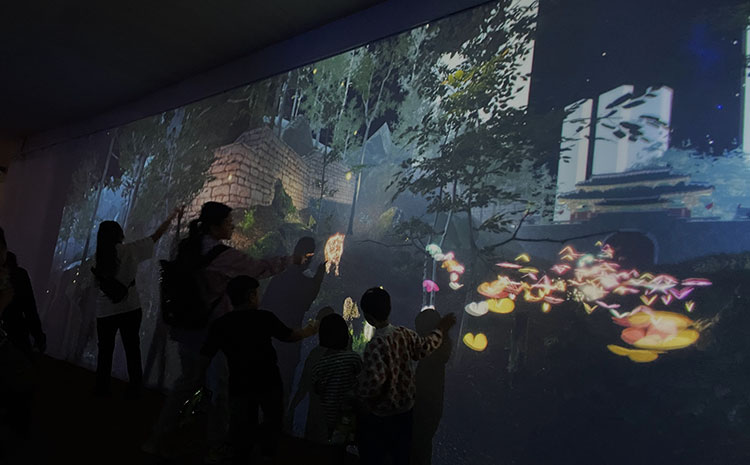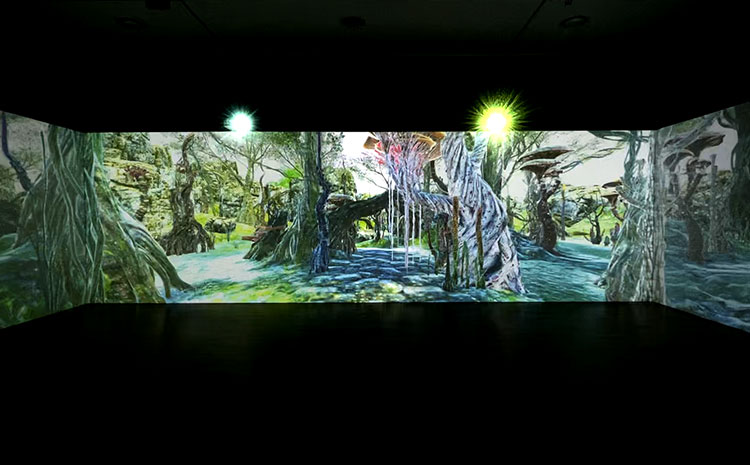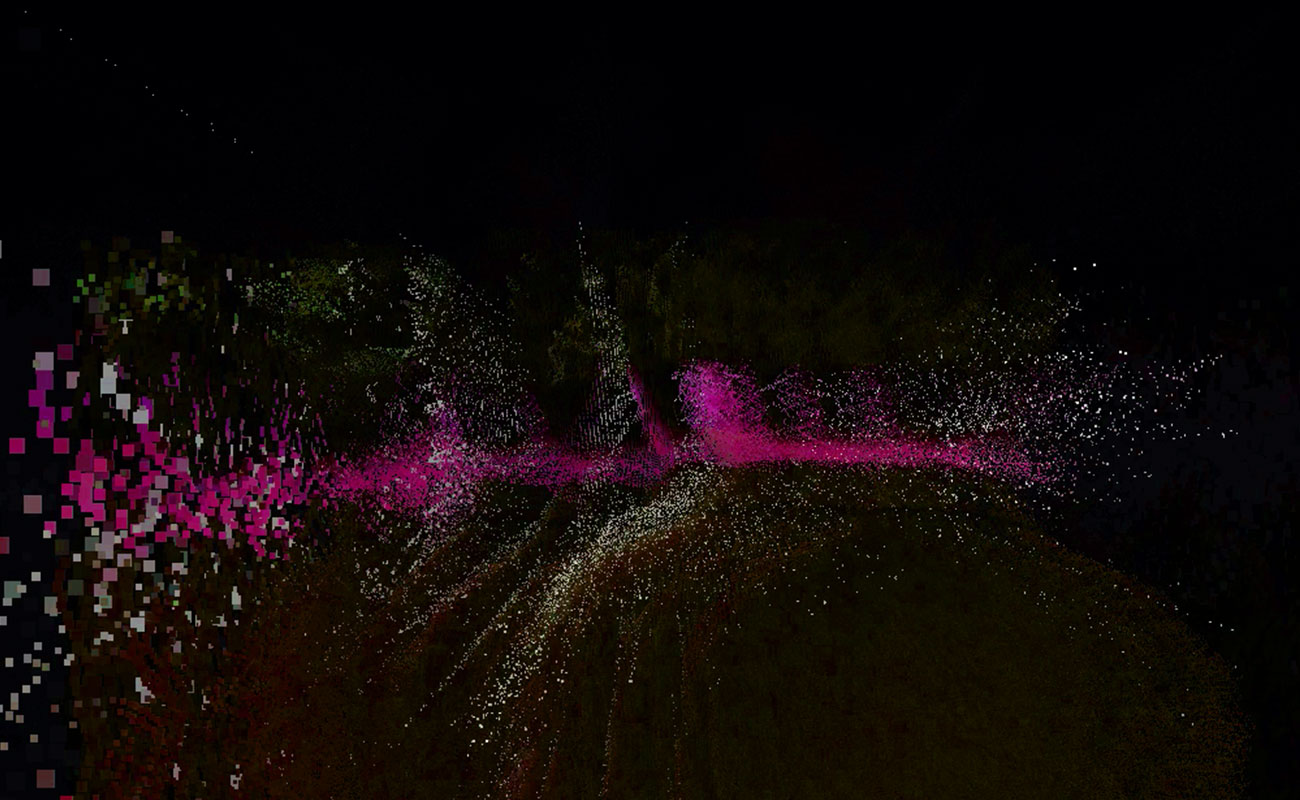“My work aims to create a piece that allows people to experience the anticipated future, diagnose the current state of humanity, and provide an opportunity to reflect on the direction in which our human history can be developed.”
Digital Media in Seoul and Gyeonggi-do
In his capacity as an artist specializing in digital media, Rimeo (Lee, Sang Wook) operates primarily within the bustling metropolitan areas of Seoul and Gyeonggi-do, South Korea. With an unwavering ambition to increase his level of engagement in these regions, he is constantly striving to refine his craft.
Seoul’s position as a technological hub in South Korea presents distinct advantages for artists like Rimeo who seek to push the boundaries of digital media. The city’s culture is characterized by an ardent desire to remain at the forefront of emerging technologies and media, which significantly influences the kind of creative works that utilize digital media. Rimeo himself was inspired by this environment, which led him to adopt digital media as his primary means of artistic expression.
Given the futuristic nature of digital media, it offers vast potential for artists to weave compelling narratives about the future. As an artist who specializes in this medium, Rimeo is convinced that many of the new forms of media that will emerge in the coming years will be rooted in digital technology. This grants him a distinct advantage in creating stories that are naturally in sync with the zeitgeist.

Rimeo and the Future of Humanity
Rimeo is developing a VR project that explores the intricacies of humanity. In his preliminary description of the project, he hinted at the themes he intends to explore. The project aims to create a futuristic environment and compare it with the present, using metaphors to extract the essence of human existence. Rimeo is particularly intrigued by the potential of VR to aid his creative process. He believes that “the habitat of humanity in the distant future will be a digital realm.” While the 21st century already has a digital world, our sensory and cognitive faculties are predominantly based on the physical world, which possesses numerous physical properties. Residing in a digital world implies a fundamental shift in how we perceive and comprehend the world, including the objects that exist in physical form today and the way humans perceive them. It also involves surpassing the limitations of the physical body. Rimeo primarily employs VR to experience and imagine this prospective environment ahead of time. By experiencing the future milieu in advance and comparing it with the current state of humanity, he hopes to demonstrate the trajectory towards which humanity is headed.
Against this backdrop, Rimeo’s VR project aims to enable individuals to encounter the projected future, assess the current state of humanity, and provide an opportunity for contemplating the direction of human history.
In his creative process, Rimeo prefers to work in a studio where he can focus entirely on building algorithms and functions in computer languages while ensuring that the desired results are displayed. Rimeo finds that a calm and undisturbed environment is conducive to his productivity during this task. However, when planning a new project and generating fresh ideas, Rimeo frequents a local café where he can engage with fellow artists and discuss his concepts. By exchanging ideas and seeking advice, he is able to refine his ideas and develop them further. Rimeo derives pleasure from this collaborative process and returns to his work, motivated to implement the new ideas generated through this exchange. As such, Rimeo’s ideal work environment requires him to balance his need for solitary concentration with a desire for social interaction and collective inspiration.

Inspired by Materialism and the Bible
Rimeo finds a lot of inspiration from reading books by futurists like “Ray Kurzweil.” At the same time, he is also inspired by books like “Materialism” and the Bible of Christianity. Rimeo believes that materialism is currently the theory that most significantly influences human beings. He notes that both transhumanism and posthumanism are based on materialistic ideas, and it is not surprising to consider that a materialistic context will remain prevalent in the future. Futurist “Ray Kurzweil” shares a similar perspective in approaching the future. Although Kurzweil’s nanobots, which are small robots that replace human body cells, are based on materialistic thinking, Rimeo finds the idea fascinating and interesting. Nevertheless, he ponders what will remain for humanity in its extension.
Amongst these contemplations, the Bible is a captivating read for Rimeo. The book aims to give value to human existence continuously. Even without belief in God, the Bible is a book that seeks to explain the worth of human existence. By exploring the Bible, Rimeo is stimulated to find a way to rediscover the meaning and value of our existence. Consequently, Rimeo gains inspiration from analyzing the future, materialism, which has created a large context in the present, and the Bible, which aims to provide human beings with value.
When examining Rimeo’s earlier artistic output spanning from 2016 to 2021, one can discern a preoccupation with researching space and portraying humanity from a spatial perspective. This creative approach, inspired by books such as “The Fabric of The Cosmos” and “Multi Universe” by Brian Greene, was distinct from Rimeo’s current style, which emphasizes different modes of representing the human experience. During this earlier period, Rimeo’s art primarily depicted the characteristics of space, incorporating human subjects within that realm, although there were limitations to the messages conveyed.
In 2022, Rimeo embarked on a new artistic journey, exploring alternative techniques for representing humanity, which ultimately led to the development of his current artistic style. This fresh approach has broadened his creative range significantly, and he is eager to showcase his latest works in a solo exhibition scheduled for the latter half of 2023.

Rimeo Lee’s Artistic Journey
Rimeo’s most favored artwork within his collection is his latest piece titled “Ghost Walk: Space.” This particular creation was showcased in 2021 at the Seoul Dongdaemun Design Plaza (DDP) as part of an exhibition entitled “Digital Story Tellers.” Working in collaboration with another artist’s work, “VR Art Game: Ghost Walk,” the two artists displayed their joint efforts under the collective title of “Ghost Walk.”
“Ghost Walk: Space” serves as a pinnacle work for Rimeo as it presents a narrative exploring the human condition from an unconventional and unique perspective from that of space. The piece is of considerable significance as it propelled Rimeo towards new conceptual and stylistic endeavors, while also serving as a source of inspiration for his future creations through its amalgamation with his collaborator’s “VR Art Game: Ghost Walk.”
The artwork marks the culmination of a narrative that has been unfolding since Rimeo’s earlier works, while simultaneously providing a springboard for the initiation of new and innovative ideas. Thus, “Ghost Walk: Space” stands as a source of immense pride and satisfaction for Rimeo.
Rimeo has been striving to create works that reveal the identity of human beings. Both his past exploration of space and his current work that contrasts the future and present of humanity are all efforts to bring out the identity of humanity. His dream project would be to create a work that provides all viewers with a sensory stimulus to reflect on what kind of beings humans are. Rimeo hopes that this dream project will become his next work.
Rimeo believes that art serves as the foundation of his actions, particularly in his pursuit of comprehending the human identity. He believes that it is through art that he gains insight into the nature of our existence and discovers what actions are required of him and how he should live his life. According to Rimeo, art’s impact extends beyond the artistic realm and is a guiding force in his relationships with others and his response to daily challenges. However, Rimeo acknowledges that art’s influence may be unpredictable and occasionally yield unintended consequences.






